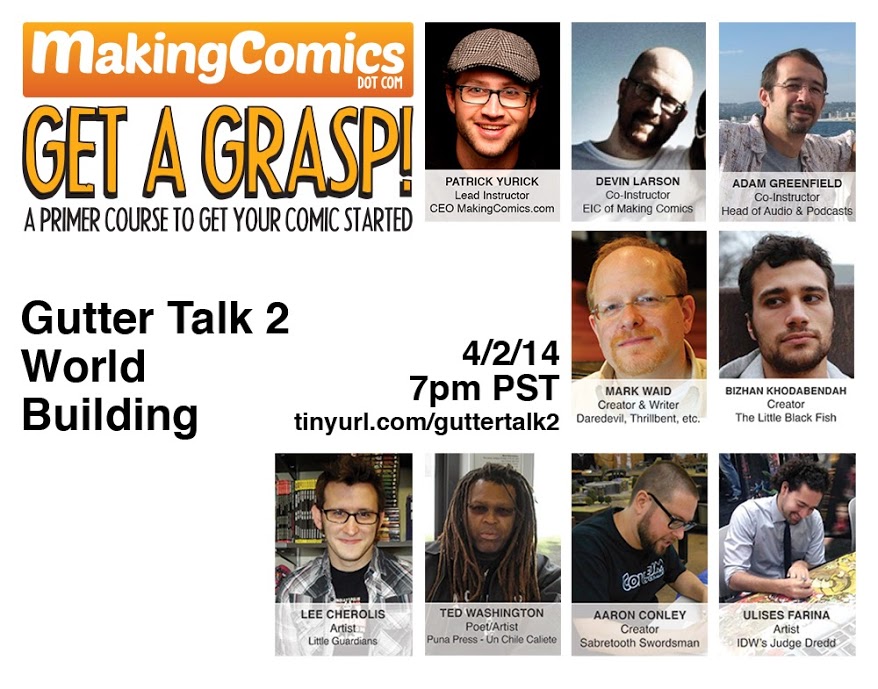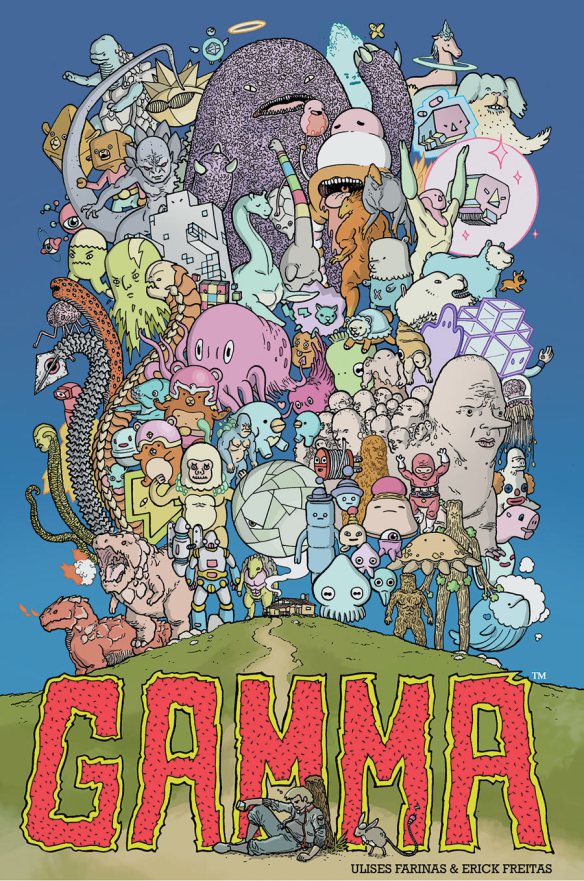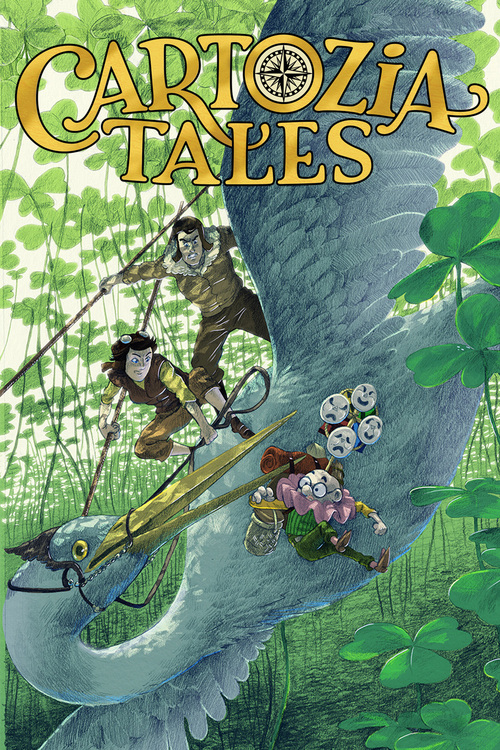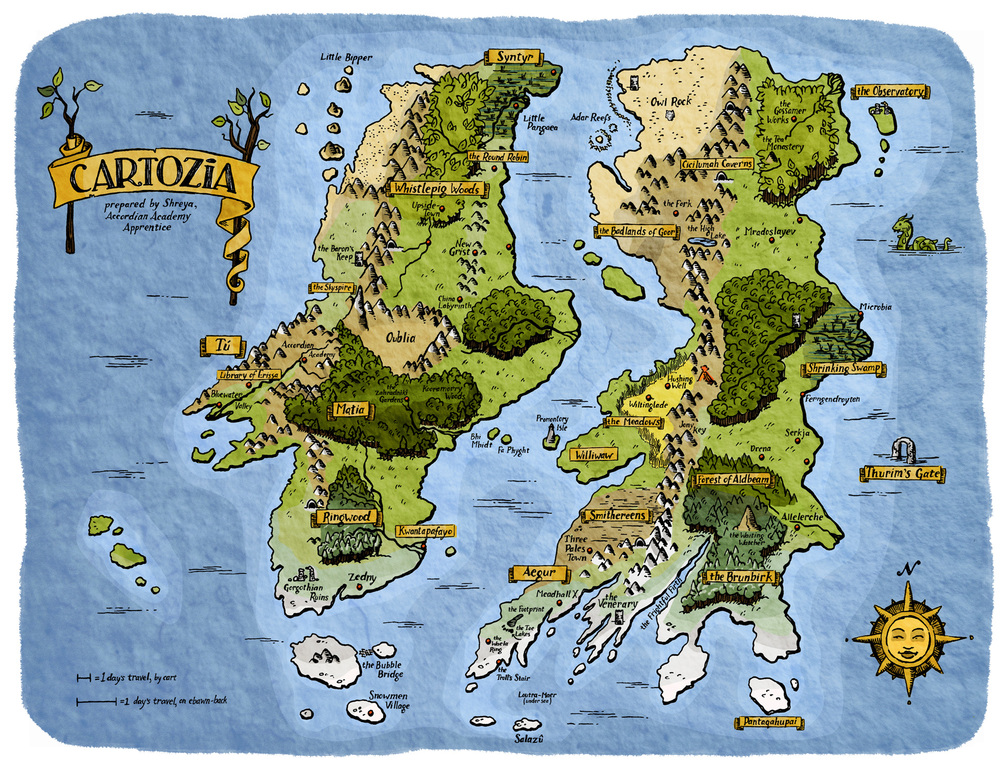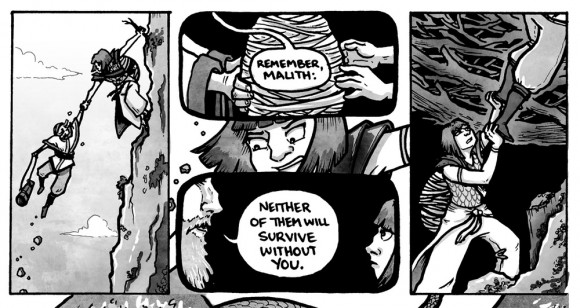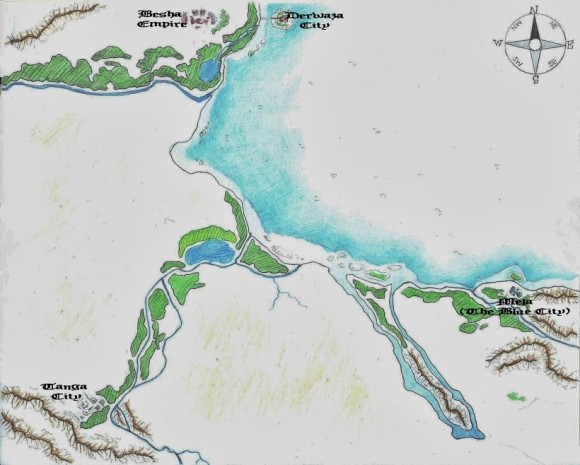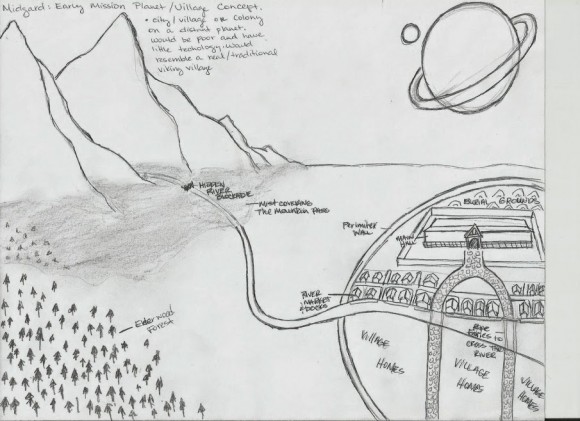13th Dimension teams up with another free MOOC (Massive Open Online Course) to enrich the comics experience! This week from MAKING COMICS: World Building.
Each week, Kevin Cullen from Making Comics’ Get a Grasp! MOOC will be highlighting the previous week’s work — complete with advice from industry vets and highlights of students’ work! (Last week, was Part 1: The Elevator Pitch.)
By KEVIN CULLEN
When people say “world building,” most folks think of JRR Tolkien’s expansive drawings or George RR Martin’s multiple-continent spanning maps. But, as the students in this week’s Making Comics Get A Grasp! MOOC discovered, world building is so much more – especially when it comes to comics.
It’s not just about determining where capital cities are or how many miles it takes to get from one mountain pass to the next. It’s about diving deeper into the story’s world and studying each detail that shapes the course of the events to come. From determining what kinds of clothes the characters wear to choosing whether buildings are built out of brick or steel, students were tasked with the challenge of putting together a repository of images on Pinterest boards to serve as both inspiration as well as reference when it came to crafting the worlds of their stories. They then took those references and illustrated or sketched out maps of where their comics take place.
At first a few folks were hesitant to invest much time in Pinterest, as the general sentiments about the website seemed to be that it’s only good for collecting recipe ideas and pictures of adorable cats. But after building their reference pages up a bit, students began to realize what a potentially invaluable resource it was.
“I already had all of these images collected, but I had never given Pinterest a chance. Had I just given them a chance I would have used their services instead of sending multiple emails full of photo references to my artist,” said student Chris Orndoff after filling his pinterest page with photos for his project, The Headmetal Racket.
Another student, Michael Freely, had the same sentiment before he started working on his project, When In This Heaven: “I was muttering ‘this is dumb’ for about 1 minute until I started actually making my first board. Then I too cursed my idiot brain. Pinterest is wonderful.”
Now the Pinterest craze has caught fire with everyone in the course! Especially with student Jenny Polden, whose project already has over 300 images! Enthusiasm is key, folks!
I asked Jason Brubaker of reMind which Pinterest boards he really connected with and he said, “I love these boards, especially Amy’s Bane of the Shadow, Jenny’s Main World, Beverly’s The Ground Lands, and Frank’s Youkai. I don’t have a Pinterest account and have never used it but I can totally see how it helps get lots of ideas for inspiration into one place. I loved how you could really get a feel for each project just by seeing the Pinterest board. Very inspiring!”
By the time Wednesday rolled around, everybody was filled with questions ranging from why world building is important to effective character creation. That night, they took to the Internet, ready for another Making Comics Gutter Talk, hosted by Patrick Yurick and featuring industry masters Mark Waid, Bizhan Khodabendah, Lee Cherolis, Ted Washington, Aaron Conley, Ulises Farinas, and Dr. Isaac Cates!
Lots of ideas were thrown around and dissected, from writing stories for all ages to the importance of the collaborative effort to cutting out little cardboard figures and playing with them on your desk as you write! Check out the tweets that popped up during the panel:
Worldbuilding isn't for readers, it's like perspective grid lines. When you're done with your project, you need to erase them. – @ulises_f
— Kevin Cullen (@ColorTheBooks) April 3, 2014
Ulises Farinas brings world building into perspective when it comes to developing both the art and the story for the comic.
David Ogilvy: "The best ideas start as jokes." Courtesy of @MarkWaid #GetAGrasp
— the devin wears prada (@devinafterdark) April 3, 2014
Mark Waid recalls the very best piece of creative advice he ever received.
It's only my story until I hand it to an artist. Then it becomes our story. –@MarkWaid #GetAGrasp #writing #makecomics
— Kevin Cullen (@ColorTheBooks) April 3, 2014
Mark Waid on collaboration and its fundamental truths.
Ted Washington "If you're not carrying the story forward, you are wasting time." #GetAGrasp
— the devin wears prada (@devinafterdark) April 3, 2014
Ted Washington’s thoughts on pacing the story to keep a reader’s attention.
Those tweets are only a tip of the iceberg! Check out the youtube video below to watch a rowdy crew of artists and writers talk about the things they love.
Once the rest of the world signed off, I sparked up conversations with a few of the panelists and asked them about their thoughts on the creative processes that they consider when beginning a project.
Ulises Farinas, artist of the current Judge Dredd comics, spoke a bit about creating reference image banks and world building: “As far as reference banks go, I always think a focus on classical art (from ancient Rome to turn of the century) is always forgotten, in favor of modern ‘concept art.’ Concept art can often be striking, but you gotta remember that you’re seeing an idea copied from an idea, copied from a movie, copied from a comic, which was influenced by, inspired by, etc. etc. That’s why so much concept art looks the same.
“What’s important when it comes to world building is to have an eye for the world around you and for the history that’s around you. That’s why I always recommend going to museums and studying the old masters, and seeing what was beautiful/inspiring to them.
“A reference bank should be filled with REAL images of the REAL world, with concept art only being a small treat here and there, and only the most striking stuff. If you’re gonna be inspired by artists, look to the past, because every artist today is a student to those masters.”
Dr. Isaac Cates, editor of Cartozia Tales, took the idea of map-making head on:
“I think the function of such maps is twofold:
1. They work as brainstorming prompts. They get you to think about what’s around the immediate area you’ve been imagining, how it fits in to other stories you’re not telling, how your ideas make sense when extrapolated outward. They help you commit some imagination in places you haven’t been planning. These maps are all good for that, to varying degrees, though most of them are also leaving big blank swatches that they might put some thought into.
2. They work as reference guides while you’re actually drawing, so you can remember where one thing is, relative to the rest of the things you’re drawing. Most of these maps are useless for that, because of the scale they’re taking on. I mean, a map of the inside of a house or a meadhall or whatever would be more practical.
“It depends what you want to use the map for. But most of the time, in comics-making, the space you need to know best is at the scale of rooms within a building, or streets within a neighborhood. It’s important to keep track of where you’ll find the stuff we can see. (Think of that streetcorner/newsstand where the alien materializes at the end of Watchmen (spoiler): to preserve our sense of realism, you don’t want the spark hydrant to be jumping around).
“The bigger issues of world-building (national boundaries, where the mountains and the sea are, etc.) can often be handled in prose as well as in a map, though I know cartoonists like to think visually.
“Maybe the smart approach would be ‘detailed, model-sheet maps for places you’re going to draw repeatedly; cloudy world-building maps for your brainstorming.’
“Really, the Cartozia map is a brainstorming tool (and a small effort at maintaining consistency in the collaboration) more than it is a document we actually consult when drawing. I guess sometimes I’ll be thinking, ‘Oh, what’s a place that’s really far from where this story is happening? Let’s make him say he has come from Little Bipper.’ But that’s at the level of script and doesn’t HAVE to have been brainstormed cartographically.”
Isaac also highlighted a few of the maps he thought were shaping up to be excellent storytelling tools and threw some advice their way to turn the maps into cohesive resources:
The map for Nahrain Michael’s untitled comic project.
Isaac: “The art looks pretty, but I think there are some weirdnesses there in, (A) the degree to which the terrain is unknown and (B) the placement of cities and a few other features. Is there a reason why the cities are near rivers but not apparently using the rivers to communicate with the rest of the map? (Do people use boats in this world?) Are the green areas farmland? (If so, why not have other villages among the distant farms?) Or are the green areas forest? (If so, why are the forests so limited in terms of their proximity to rivers?)”
Jayson Stoll’s map for his project, The Berserkers
Isaac: “This sketch looks like some good brainstorming, but it’s not going to work as a map until the person drawing it commits to more than just ‘zones’ of where things happen. (Also, a choice of perspective and scale would be helpful.) Of all of these maps, it’s the one I find most intriguing storywise, but it’s also very vague. Probably one detailed map of the village and another map that shows its position in the world would make more sense.”
For more maps and awesome Pinterest boards, check out the ever growing Making Comics MOOC Community. And be sure to check back here next week for awesome strategies on developing effective scheduling habits and realizing your comic-making goals.
Kevin Cullen is head of content development at Making Comics (dotCOM).



